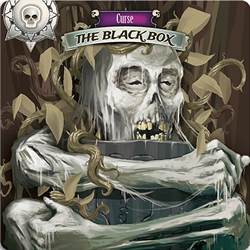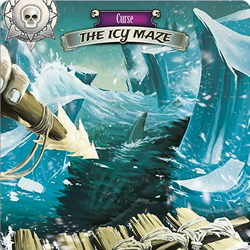| Forums/ The 7th Citadel/ Rules and Operating Points11 posts |
|---|
|
Posted
If during the Consequence step you are told you can add a card to your hand instead of discarding it and your hand is full can you discard a card from your hand so that you can add the new card? I'm asking because on page 19 of the rules - Hand Size - it says that you must discard excess cards from your except during and action you are involved in. Is the Consequence step considered to be part of the Action? If so then you should not be able to discard a card from your hand to make room for the new card gained during the Consequence step.
Posted
Hello !
Welcome Gardener ! Don't hesitate to introduce you here. Yes, Consequence is the 4th point step of an Action sequence (see p.12 & 13). So, you can have as many cards in hand as you want during this sequence. Then, when it finished, you discard to follow the Hand limit according to the number of players. T7Continent : T7Citadel : Posted
By that same logic, separate steps of a compound action often allow adding some number of result cards to your hand. Since a compound action is a single action, you could end up with several cards above your hand size limit during the action and only need to discard down to your allowed hand size once the compound action is over. Is that correct? Thanks!
Posted
Paralt wrote: By that same logic, separate steps of a compound action often allow adding some number of result cards to your hand. Since a compound action is a single action, you could end up with several cards above your hand size limit during the action and only need to discard down to your allowed hand size once the compound action is over. Is that correct? Thanks! No, a compound action consists of a series of actions. You can even walk away from an unfinished one and come back later (if it is not mandatory). CS VotE Posted
What is prompting my question is that I'm in a mandatory action - one action icon - which I can't walk away from. I get that if you walk away after a completed step in a non-mandatory compound action, you would have to normalize your hand. It's your understanding, though, that one would have to normalize their hand at the beginning of each row in a mandatory or non-mandatory compound action?
Thanks. Posted
Each try in a compound action follow the action steps.
Between 2 actions, you must apply this rule, even if you do nothing else :  Mandatory or non-mandatory doesn't change anything. T7Continent : T7Citadel : Posted
Sorry to keep pushing this point, but it seems logical to me. "...Except during an action you are involved in..." (bolding mine). The glossary (p. 26) defines a compound action as "An action usually made up of multiple rows and taking several turns to be finished..." (bolding mine). It doesn't refer to each row as a separate action. Also, on p. 10, the rulebook states that "[an] action will always be represented by an icon in a white square..." Each row in a compound action does not have a new white icon, but in every instance I have seen so far, a compound action is represented by a single white icon.
In a non-mandatory compound action, if I choose to stop on a new row and do something else, I will be performing a new action and would therefore have to normalize my hand. At that point, I am between two actions as is referenced above. If I am performing a mandatory Fight compound action, for example, on each row I am still resolving that Fight action. Again, just following logic (to me). And I also recognize that by now, I could have already resolved this for myself by applying the golden rule on p. 16 of the rulebook. Thanks! Posted
It‘s one action, that‘s correct.
But you do it multiple times. And each time you go through all the steps. CS VotE Posted
Okay, accepting your interpretation.
A turn sequence is described on p. 10 of the rulebook, the first step of which is to "choose the active player and the action to be taken." At the end of the compound action example on p. 15, it states that after a consequence has been reached on the first row of the card, that a new turn begins. The first step of that turn would include choosing the action to be taken. In the case of a mandatory compound action, that choice is out of the player's hands, but an action has been selected. Besides, it would seem counter to the intent of the game for a player to have 6-7 cards in their hand from which to choose to possibly affect a result. Sorry, armchair lawyer here. Posted
Just a quick reminder, each attempt at a compound action constitutes a new Turn (see page 10).
Therefore, each of these attempts is considered a complete Action in itself, encompassing steps 1, 2, and 3 of the turn sequence. Afterward, a new turn begins for the subsequent Action, as outlined in step 4 of the turn sequence. |
| Forums/ The 7th Citadel/ Rules and Operating Points11 posts |
Forums
Latest topics
The Beginning PDF
by Braxus -
Mandatory Action
by Braxus -
Exploring Creative Worlds Like The 7th Citadel and the Power of Good Storytelling
by Braxus -
Card clarification/ situational icon
by Firebird -
Possibly Exploit Card A0913/ Location 357
by Braxus -
Exploration card error
by Braxus -
Wanderer/Discovery Mode
by sgbeal -
Compound action question NO SPOILER
by Firebird -
Is there an issue with after sales support?
by Braxus -
Temporary states
by Braxus -




